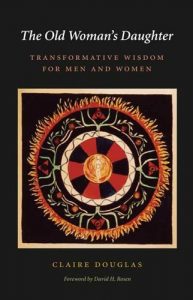Also available in an open-access, full-text edition at http://oaktrust.library.tamu.edu/handle/1969.1/86078
The Old Woman’s Daughter offers men and women alike a way to make sense of their lives and find more healing alternatives than offered by our present culture.
In gentle, evocative imagery, Jungian analyst Claire Douglas invites readers to reconnect with the ancient tradition of the feminine, the “Old Woman,” symbolized by her own Celtic grandmother. After considering the dangers to individuals and the society of the masculine-focused dualities of our own culture, Douglas describes an alternative that incorporates the feminine self within each of us, man or woman.
Douglas draws on myth and story, her own experiences, poetry, the dreams of some of her patients, and images available from Tibetan Buddhism to find archetypes that help us recognize our inheritance from the Old Woman. She describes a form of therapy that emphasizes “cherishment” or bonding for the purpose of recovering our ties to the ancient feminine, and she deftly incorporates her search for her own voice in shaping the book into an organic whole.
Rising from Douglas’s lifelong interest in the psychology of the feminine, this book shows how healing is related naturally to a Motherline of attunement, connection, and cherishment.
In gentle, evocative imagery, Jungian analyst Claire Douglas invites readers to reconnect with the ancient tradition of the feminine, the “Old Woman,” symbolized by her own Celtic grandmother. After considering the dangers to individuals and the society of the masculine-focused dualities of our own culture, Douglas describes an alternative that incorporates the feminine self within each of us, man or woman.
Douglas draws on myth and story, her own experiences, poetry, the dreams of some of her patients, and images available from Tibetan Buddhism to find archetypes that help us recognize our inheritance from the Old Woman. She describes a form of therapy that emphasizes “cherishment” or bonding for the purpose of recovering our ties to the ancient feminine, and she deftly incorporates her search for her own voice in shaping the book into an organic whole.
Rising from Douglas’s lifelong interest in the psychology of the feminine, this book shows how healing is related naturally to a Motherline of attunement, connection, and cherishment.



